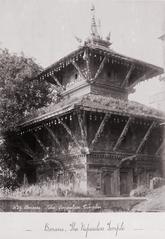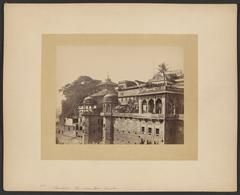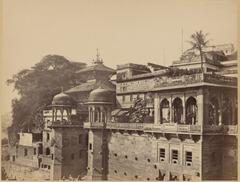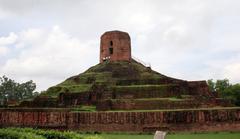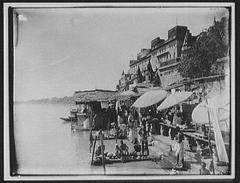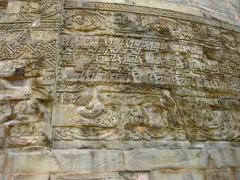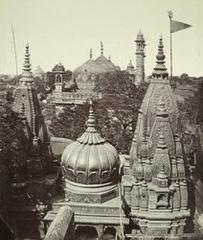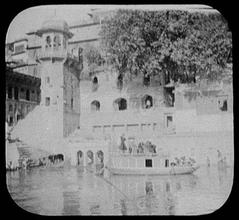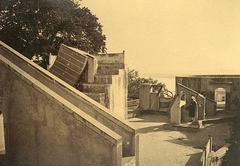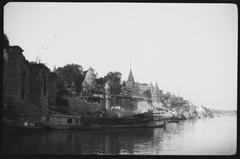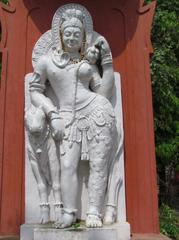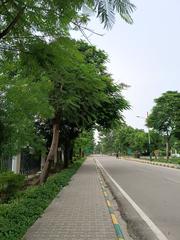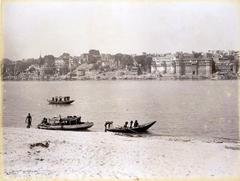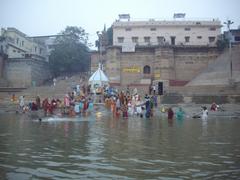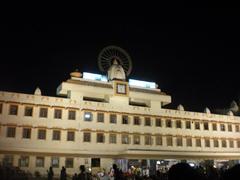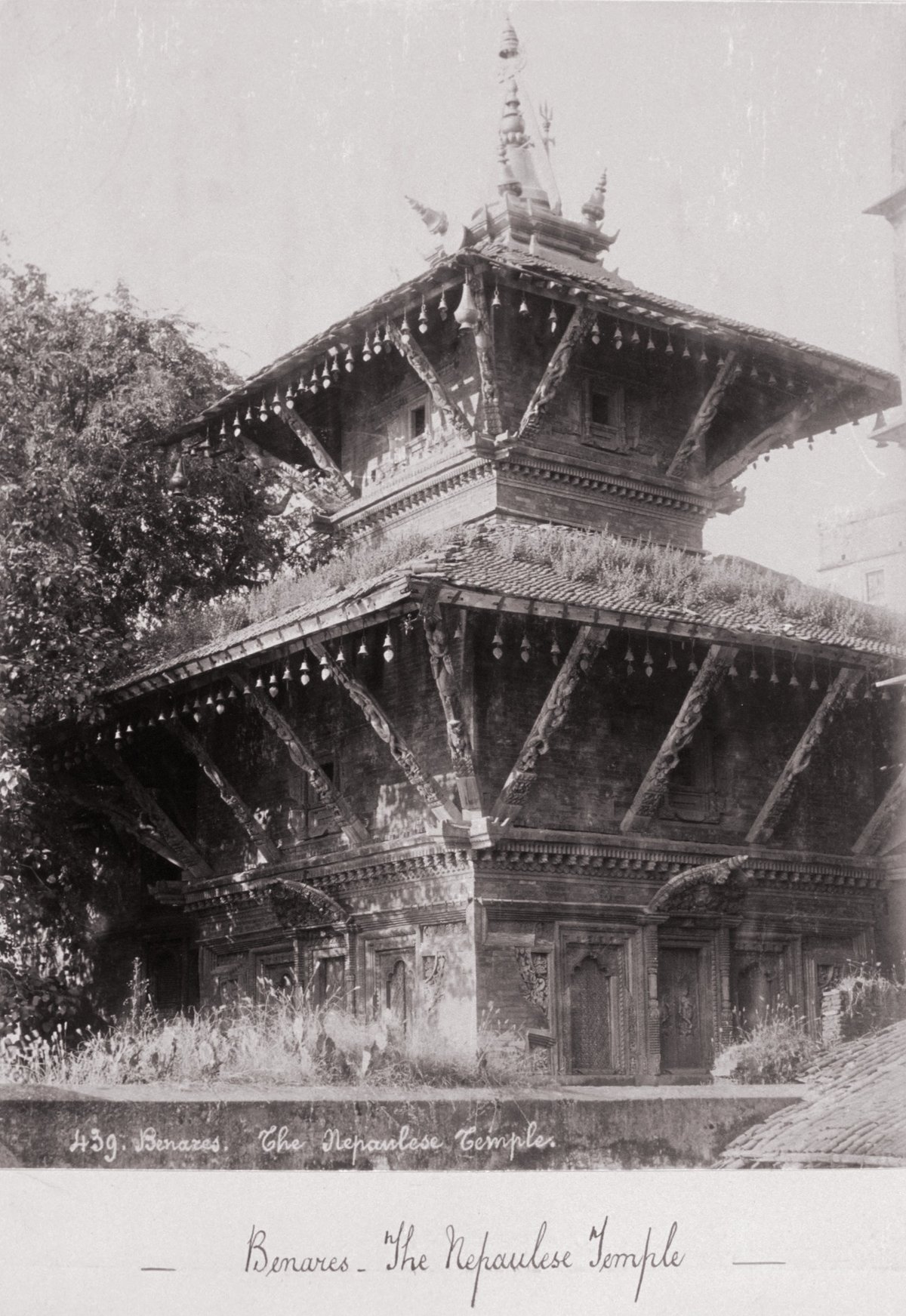
Nepali Mandir Varanasi: Visiting Hours, Tickets, and Complete Travel Guide
Date: 14/06/2025
Introduction
The Nepali Mandir in Varanasi—also known as the Kathwala Temple or Mini Khajuraho—is a unique testament to the deep-rooted cultural and spiritual connections between Nepal and India. Located on Lalita Ghat along the sacred Ganges, this 19th-century pagoda-style temple stands out amidst Varanasi’s predominantly North Indian architecture. Commissioned by the exiled Nepali King Rana Bahadur Shah to recreate Kathmandu’s revered Pashupatinath Temple, Nepali Mandir is celebrated for its intricate termite-resistant wood carvings, multi-tiered roofs, and striking terracotta embellishments.
This guide provides a comprehensive overview of the temple’s history, architectural significance, religious symbolism, visiting hours, entry details, accessibility, nearby attractions, and current preservation efforts. Whether you are a pilgrim, a lover of architecture, or a traveler seeking to experience Varanasi’s lesser-known spiritual treasures, this article will help you plan a meaningful and enriching visit.
For a detailed historical and architectural exploration, see Optima Travels and India Easy Trip.
Table of Contents
- Historical Background
- Architectural Highlights
- Religious and Cultural Significance
- Visitor Information
- Nearby Attractions
- Preservation Efforts and Future Outlook
- Travel Tips
- Frequently Asked Questions (FAQ)
- Conclusion
- References
Historical Background
Origins and Construction
The Nepali Mandir’s origins trace back to King Rana Bahadur Shah’s exile in Varanasi (1800–1804). Seeking to maintain his spiritual connection to Nepal, the king initiated the construction of a temple modeled after Kathmandu’s Pashupatinath. After his assassination in 1806, the temple remained incomplete. It was later finished by his son, Girvan Yuddha Bikram Shah Deva, with the land formally granted by the Kashi Naresh in 1843. Today, the Nepal government continues to maintain the temple and adjacent Lalita Ghat (Optima Travels).
Architectural Highlights
Pagoda-Style Distinction
Nepali Mandir is the only major Nepalese pagoda-style temple in Varanasi. Built with termite-resistant wood imported from Nepal, it features intricately carved panels, multi-tiered roofs, and detailed terracotta work. The temple’s erotic and mythological sculptures have led to its moniker “Mini Khajuraho,” referencing the iconic art of Khajuraho temples (Tour My India). The sanctum houses a Shiva lingam, with a Nandi bull statue facing it—hallmarks of Shaivite tradition.
Artistic Features
The temple is adorned with exquisite woodwork, including floral and geometric motifs, mythological figures, and symbolic mandalas. Red-tinted terracotta and stone reliefs add visual depth and texture. Nepalese artisans’ craftsmanship is evident throughout, making the temple a living museum of Nepalese artistry (Ramkumar Jisons).
Religious and Cultural Significance
Spiritual Importance
Dedicated to Lord Shiva as Pashupatinath, the Nepali Mandir symbolizes the spiritual bridge between Nepal and India. Located on Lalita Ghat—named after an aspect of Adi Shakti—the temple is a revered spot for rituals believed to bring prosperity and happiness (Visit Varanasi).
Ritual Practices
Pilgrims offer water, milk, bilva leaves, and flowers to the lingam. The tranquil riverside setting enhances meditation and prayer. Its proximity to Kashi Vishwanath Temple integrates Nepali Mandir into the broader Varanasi pilgrimage circuit.
Cultural Exchange
The temple’s history and ongoing maintenance by Nepal’s government underscore the enduring cultural and religious ties between the two nations (Optima Travels).
Visitor Information
Visiting Hours and Entry Fees
- Recommended Hours: Daily, 6:00 AM – 8:00 PM. (Timings may vary slightly during festivals.)
- Entry Fee: Free for all visitors. Donations are appreciated and contribute to temple upkeep.
Location and Accessibility
- Address: Lalita Ghat, Varanasi, Uttar Pradesh
- By Foot: From Godowlia Chowk or Dashashwamedh Ghat (10-minute walk through narrow lanes)
- By Vehicle: Vehicles cannot reach the temple directly; nearest drop-off is at Godowlia Chowk
- By Public Transport: Easily reachable by auto-rickshaw or taxi from Varanasi Junction (3.8 km) or by bus from Lal Bahadur Shastri International Airport (26 km)
- Accessibility: Steps and narrow alleys lead to the temple; wheelchair access is limited, though improvements are underway (Vasistha Foundation)
Dress Code and Etiquette
- Dress modestly, covering shoulders and knees. Remove footwear before entering.
- Behave respectfully: speak softly, avoid touching idols, and refrain from public displays of affection.
- Photography is generally allowed in outer areas, but always check with temple staff, especially during ceremonies (BanarasTrip).
Nearby Attractions
- Kashi Vishwanath Temple: Iconic Shiva temple, 5-minute walk away.
- Dashashwamedh Ghat: Famous for evening Ganga Aarti.
- Manikarnika Ghat: Renowned cremation site.
- Assi Ghat: Popular for sunrise rituals.
- Sarnath: Buddhist pilgrimage center, 10 km from Varanasi.
Explore the vibrant lanes for Banarasi silk, handicrafts, and local cuisine (Thrillophilia).
Preservation Efforts and Future Outlook
Conservation
- Restoration of woodwork and terracotta by Nepalese artisans and Indian conservationists
- Pest control and environmental management to mitigate flooding and pollution risks (Wikipedia)
Government and NGO Initiatives
- Supported by heritage schemes like Swadesh Darshan (PIB)
- The Vasistha Foundation leads local restoration and cultural outreach (Vasistha Foundation)
Sustainable Tourism
- Visitor education, guided tours, and waste management help preserve the temple and its surroundings (Future Market Insights)
Challenges
- Environmental pressures, over-tourism, urban development, and funding constraints remain ongoing concerns.
- Technological advances like 3D scanning are being adopted for better conservation (TravelSetu).
Travel Tips
- Best Time to Visit: October–March for pleasant weather. Early morning or evening for a peaceful experience.
- Hydration: Carry water, especially in summer.
- Safety: Beware of pickpockets in crowded lanes; avoid unsolicited offers for guides or donations.
- Facilities: Limited public restrooms; vegetarian food is widely available, while alcohol and non-veg food are prohibited near the temple.
- Shopping: Bargain politely in local markets (TravelSeeWrite).
Frequently Asked Questions (FAQ)
Q1: What are Nepali Mandir’s visiting hours?
A1: Daily, 6:00 AM – 8:00 PM (may vary slightly during festivals).
Q2: Is there an entry fee?
A2: No, entry is free for all visitors.
Q3: How do I reach Nepali Mandir?
A3: Walk from Godowlia Chowk or Dashashwamedh Ghat, or take an auto-rickshaw/taxi to the nearest drop-off point.
Q4: Is the temple accessible for differently-abled visitors?
A4: Accessibility is limited due to steps and narrow lanes; improvements are in progress.
Q5: Can I take photographs inside the temple?
A5: Photography is allowed in outer areas; check with staff for restrictions during rituals.
Q6: Are guided tours available?
A6: Local guides and NGOs like the Vasistha Foundation organize tours upon request.
Conclusion
Nepali Mandir stands as a distinctive jewel among Varanasi’s historic and spiritual sites. Its unique Nepalese architecture, rich history, and tranquil setting make it a must-visit for anyone seeking to experience the multi-layered heritage of Varanasi. Supported by collaborative preservation efforts and sustainable tourism, the temple continues to embody the enduring bonds between Nepal and India. Plan your visit thoughtfully, respect local customs, and contribute to ongoing conservation initiatives for a rewarding and responsible travel experience.
For further insights and travel inspiration, download the Audiala app, explore our related articles, and join us on social media.
References and Further Reading
- Nepali Mandir Varanasi: History, Architecture, Visiting Hours & Tickets – Optima Travels
- Nepali Mandir Varanasi: Visiting Hours, Tickets & Architectural Highlights – India Easy Trip
- A Detailed Guide of Varanasi or Kashi – Tripoto
- Things to Know Before Visit Varanasi – BanarasTrip
- Nepali Mandir Varanasi: Visiting Hours, Tickets & Preservation Efforts – Vasistha Foundation
- PIB Feature on Swadesh Darshan
- Nepali Mandir Wikipedia Entry
- Sustainable Tourism Sector Overview – Future Market Insights
- Nepali Temple in Varanasi – Ramkumar Jisons
- Travel See Write – Best Things to Do in Varanasi
- Thrillophilia – Attractions: Nepali Temple Varanasi
